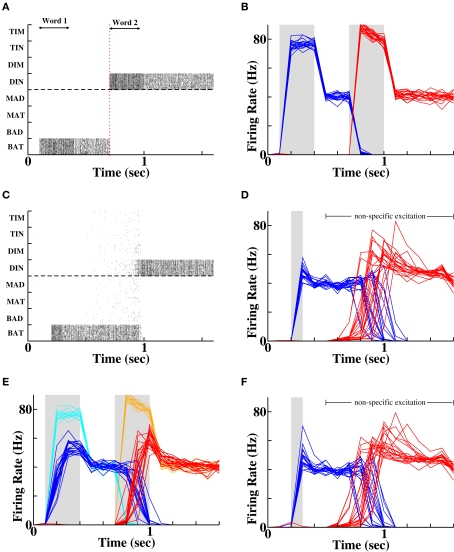Figure 2.
Forward recall via coupling between “word” populations. (A) Spike rasters during a single example of presentation of two stimuli. Each row contains the spikes of a single cell. The double-headed arrows indicate presentation of each word (via afferent Poisson input), which produces activity in a specific population that persists following stimulus offset. (B) Average firing rates of the populations of cells successively stimulated (blue = “BAT”, red = “DIN”) on each of 20 different random instantiations. (C) Spike rasters during a single instantiation demonstrating forward recall of the second word (“DIN”) following activation of the first word (“BAT”). (D) Average firing rates of the two populations across 20 independent random instantiations, demonstrating recall of “DIN” following activation of “BAT”. Gray solid bar indicates time period when first word is activated. (E) Protocol of weaker stimulation produces weaker and delayed initial activity (dark blue and red traces) compared to control (light cyan and orange traces). Twenty random instantiations of the weaker stimulation protocol produce identical final activity to controls, signifying equivalent levels of word recognition. (F) Average firing rates of the two populations with prior weak stimulation, following reactivation of the first word. Recall probability is reduced from 100% control to 75% of instantiations (15 out of 20 simulations).

